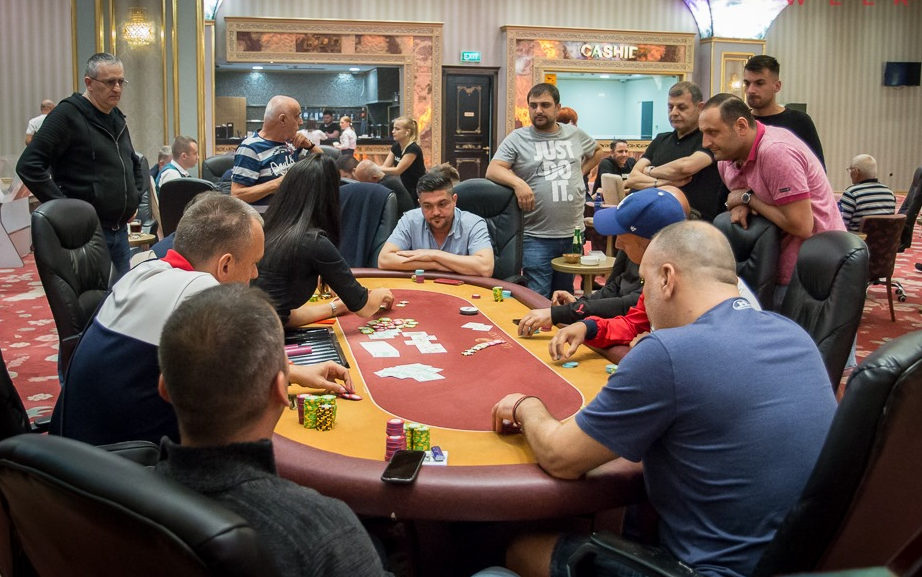Dealing With Aggressive Players in NL Hold’em

Knowing the types of opponents you’re playing against relative to your position at the table is crucial to winning in poker. The ideal situation, whether you’re playing a poker tournament or cash game, is to have tight straightforward players to your left and aggressive maniacs who can be unpredictable to your right.
If you can know what the aggressive players are doing before it’s your turn to act, you will have more information at your disposal in situations when the pot has been inflated, which is extremely valuable info to have. When you have an aggressive player to your left, a player that is raising and re-raising every second hand it seems, they can make life really difficult for yourself, especially when you have marginal hands like AJ/AT that don’t play very well against a 3 bet.
Picking Your Seat / Exploiting Your Position
When you first sit down at a live cash game table, one of the first things you should do is attempt to profile the other players at the table to find out who the aggressive players are. While some aggressive players can be good, at ½ most of them are not, and they can’t help themselves to bluff at every opportunity, which can be their undoing in the end.
Before you even play a hand you can get a pretty good idea of who the aggressive players are at the table, usually just by the way they dress, how they stack their chips, table talk, how old they are, and the like. Older players tend to play like rocks, whereas young internet poker players that have migrated to live games tend to play more aggressively.

If there are only two available seats at the table, scan the table quickly for these “tells” and choose your seat wisely, making sure that you have position over the aggressive players. When you take this factor into account, it allows you to abuse your position against the aggressive players, and this is where the real money is in poker. You may not be making a lot of money from the tight players that are only looking to play huge pots with real hands, but aggressive players will be making moves they can’t help themselves, so your win rate against them when you adjust accordingly can be very good.
First and foremost, if you find that you are seated in a bad relative position versus aggressive players at the table, then you can choose to move tables. You don’t have to play in the game if it’s not profitable, or if you are forced out of your comfort zone, which may mean it’s influencing you’re A-game.
Note About Aggressive Players
Not all aggressive players are created equal. Just because you see a player open every pot doesn’t necessarily mean they are always bluffing on the flop and later streets. Pre-flop aggression doesn’t always correlate to post-flop aggression. The aggressive players that you want to be targeting are the ones that are mindlessly looking to steal every pot after the flop.
While light 3-betting isn’t that common in the small stakes live cash games, aggressive players are certainly opening more hands before the flop. If they are positionally aware players, then especially in late position, although most of them are not and will enter the pot with a raise from any position.
While it would be ideal to always have aggressive players to your right, that doesn’t always happen, and all good poker players know they should be able to adjust to be able to deal with the changes in table dynamics. In other words, you should be looking to play unexploitable poker. Although it can be tough having a maniac to your left, there are certain strategies you can adopt to be able to combat their aggression, whether it’s pre-flop of post-flop aggression.
Adjustments Against Aggressive Players
Because aggressive players are playing with wide ranges, it’s impossible for them to always have a strong hand. A good weapon in your poker arsenal against these types of aggressive players is to trap them. They will sense your check as being weak and will eventually bluff their entire stack as a bluff. Easy game.
If there is an aggressive player to your left at the table that you have seen re-raise a lot, then you certainly want to be tightening up your raising range, and only raising hands that do well against their 3-bet range that you can continue with. Don’t fall into the trap of raising medium-strength hands and calling out of position with these hands against these players.
It’s also good to know how far the aggressive player is willing to go when they make a hand. If they are betting every street with their made hands, you can just check to them and be confident they will do the betting for you. On the other hand, if they have a tendency to only bet the flop and turn but check back the river, you should consider leading out on the river when you expect to have the best hand but suspect they have also had some type of hand, which will often be the case on boards with no draws present.
